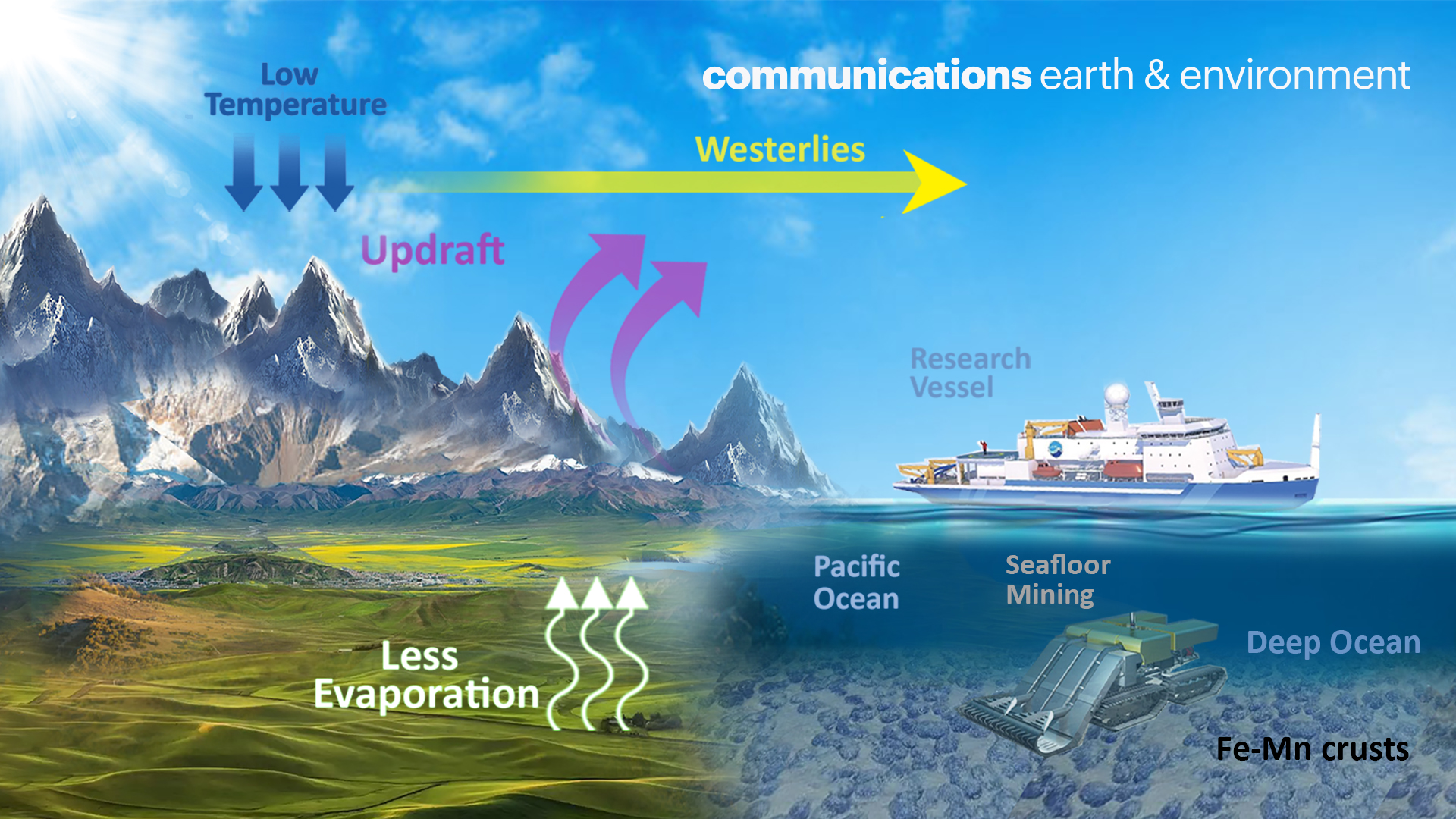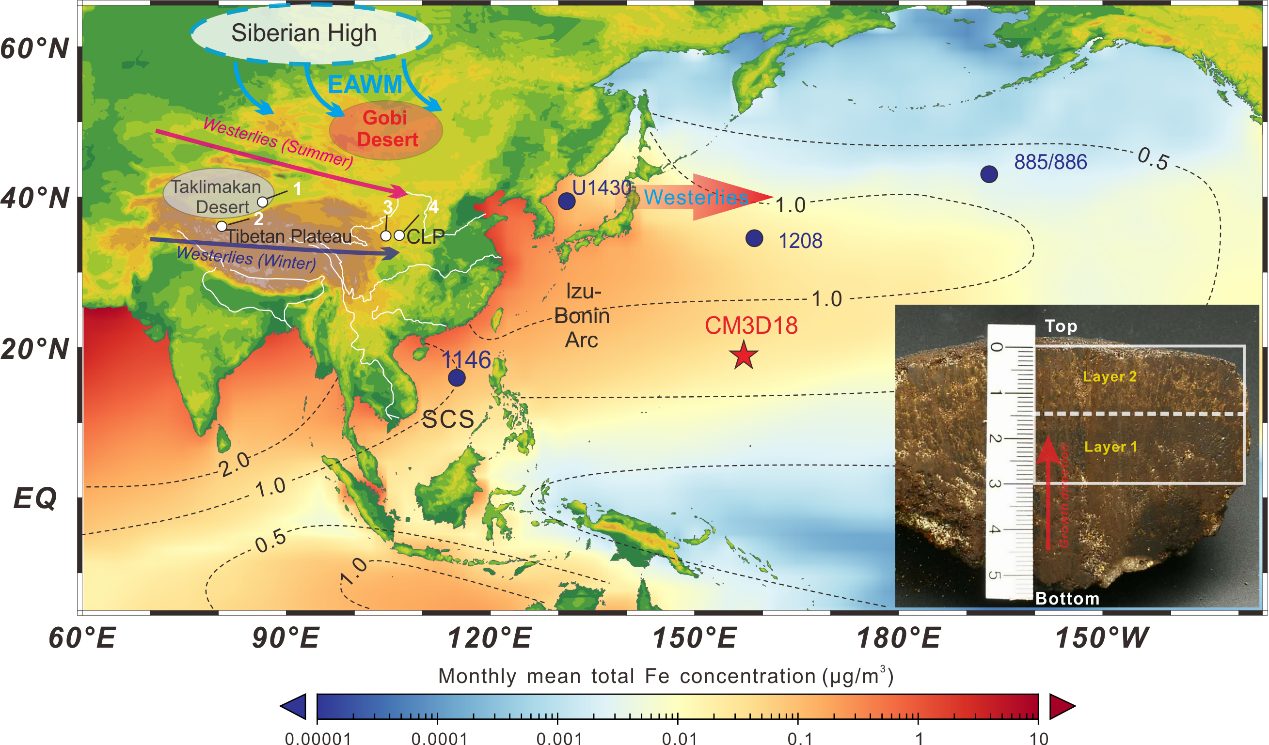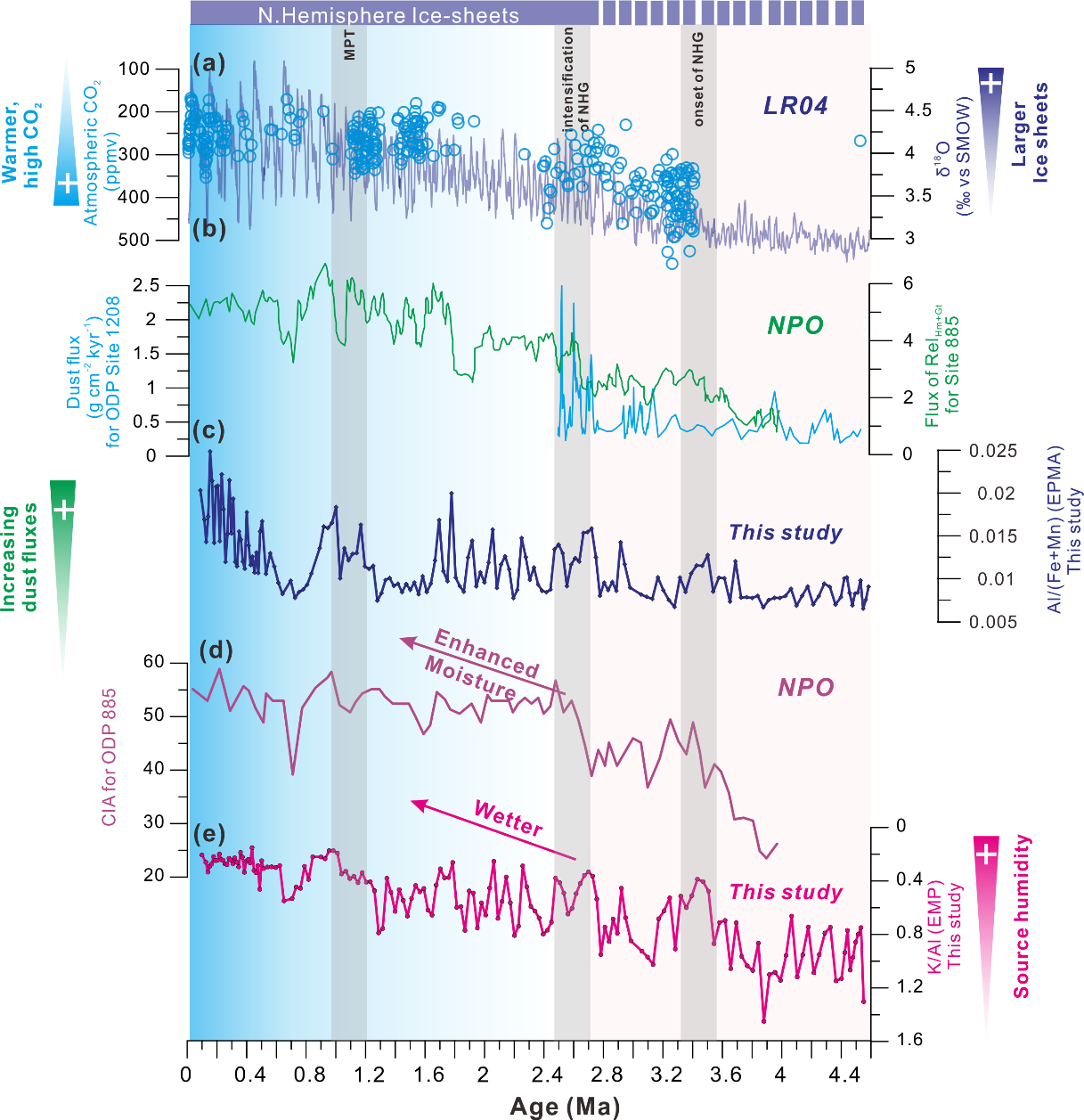Central Asia is the homeland of the traditional Silk Road, a trade and cultural corridor across the Eurasian continent. It has played a key role in cultural exchanges between the East and the West, and advanced the development of civilization in its vicinity.
Many famous ancient civilizations, such as the Loulan and Kuzi, once flourished in Central Asia but eventually disappeared, likely affected by past climate change. In light of this, it is of great interest to study the past evolution of aridity in Central Asia, which could help to understand the climate during the Silk Road development, as well as future changes in the region of the Silk Road economic belt.

The Centre for Marine Magnetism (CM2) team from the Department of Ocean Science and Engineering at the Southern University of Science and Technology (SUSTech) recently revealed an equatorward shift of the westerly winds and humidification of Central Asia during the Plio-Pleistocene.
Their paper, entitled “Humidification of Central Asia and equatorward shifts of westerly winds since the late Pliocene,” was published in Communications Earth & Environment, a leading Nature series journal in the field of Earth Sciences.
Unlike the East Asian monsoon climate, Central Asia is mainly controlled by the mid-latitude westerly winds. This region is the largest arid area in the mid-latitudes of the Northern Hemisphere, one of the major sources of atmospheric dust in the world. The prevailing westerly winds in the mid-latitudes allow for the long-distance transport of the eolian dust generated in Central Asia, with much of it deposited in the northwest Pacific Ocean. Low sedimentation rates in the deep open ocean mean that eolian dust can play an important role in determining the composition of ocean sediments. Hence, geological archives, such as those of ferromanganese (Fe-Mn) crust, from the Pacific Ocean could provide valuable information on past climate change in Central Asia over thousands to millions of years.
In 2018, the CM2 team set out to study a particular Fe-Mn crust sample, CM3D18, which had been collected from the Marcus-Wake Seamount Group in the western Pacific Ocean. Based on high-resolution multi-proxy geochemical and magnetic analyses, they were able to reconstruct past variations in dust sources and their links to Central Asia’s varied aridity over the past seven million years (Figure 1).

Figure 1. Map showing (i) dust source regions in Central Asia (e.g., Gobi Desert, Taklimakan Desert), (ii) dust transport by the Northern Hemisphere westerly winds, (iii) supply of dust to the oceans as traced with iron fluxes (color shading) and dust fluxes (dotted lines), (iv) the locations of selected existing sediment core records (blue circles), and (v) the studied Fe-Mn crust CM3D18 (red star). Inset figure shows the image of Fe-Mn crust CM3D18 (scale labeled in cm).
The researchers reconstructed the potassium/aluminum (K/Al) ratio, representing a chemical weathering index, revealing that the dust source areas were drier during the warm Pliocene (5.3-2.6 million years ago). Following the onset of Northern Hemisphere glaciation and gradual glacial intensification during the Pleistocene (last 2.6 million years), the dust fluxes increased, which could be explained by the effects of both glaciation and increased moisture availability providing a greater supply of fine-grained material in the source areas (Figure 2). Furthermore, they also identify a gradual shift in the lead (Pb) isotope compositions in the Fe-Mn crust, suggesting a gradual provenance change in the dust source regions, from a dominant Gobi Desert source to a mixed Gobi-Taklimakan Desert source following the global cooling in the past 5 million years.
The team was able to explain the above observations by comparing them to model simulations using the Alfred Wegener Institute earth system model (AWI-ESM). Under an elevated atmospheric CO2 forcing, representing the Pliocene, they found increased potential evaporation in Central Asia, resulting in a hotter and drier climate. This scenario could explain the signature of reduced chemical weathering of the sediments. At the same time, the arid conditions also restricted the creation and supply of fine-grained dust to be transported to the Pacific Ocean.
Meanwhile, the warmer global temperatures led to the displacement of the westerly jet towards higher latitudes, which could explain the dominance of dust supply from the Gobi Desert. Following the Pleistocene cooling, those Pliocene changes were reversed, which led to a southward shift of the westerly winds and enhanced moisture availability in the Central Asia continental interior, driving an increased dust flux.

Figure 2. Proxy comparison among records from the North Pacific Ocean and West Pacific Ocean. (a) Atmospheric CO2 and global benthic LR04 δ18O stack; (b) Flux of RelHm+Gt at ODP Site 885 as an indicator of dust inputs and dust flux at ODP Site 1208; (c) Al/(Fe+Mn) (count ratio) in crust CM3D18; (d) CIA at ODP Site 885; (e) K/Al (count ratio) in crust CM3D18. Blue bars at the top of the figure indicate the development of the Northern Hemisphere ice sheets. Gray vertical bars indicate the onset and intensification of Northern Hemisphere Glaciation (NHG) and the Mid-Pleistocene Transition (MPT).
Overall, the study suggests that, in the context of future global warming, the degree of aridity in Central Asia can be expected to increase further. In the arid areas of the “Silk Road economic belt”, water shortages are the primary factor restricting local economic development. To ensure ecological and water security, it is, therefore, necessary for government agencies to understand the science behind the changing distribution of water resources in Central Asia.
In relation to the strategic framework of the “Belt and Road Initiative”, Central Asian countries should jointly participate in formulating a complete set of water resource management plans, considering demographic, social, economic, ecological, and environmental factors to ensure the future sustainable development of this region.
Dr. Yi Zhong from the Department of Ocean Science and Engineering at SUSTech is the first author of this paper. Prof. Qingsong Liu and Dr. Hu Yang from the Alfred Wegener Institute for Polar and Marine Research (AWI) are the corresponding authors.
This work was supported by the National Natural Science Foundation of China (NSFC), State Key Laboratory of Marine Geology, Tongji University, Opening Foundation of the Shanghai Sheshan National Geophysical Observatory (Shanghai, China), State Key Laboratory of Marine Geology, and Shenzhen Science and Technology Program.
Paper link: https://doi.org/10.1038/s43247-022-00604-5
To read all stories about SUSTech science, subscribe to the monthly SUSTech Newsletter.
Proofread ByAdrian Cremin, Yingying XIA
Photo By